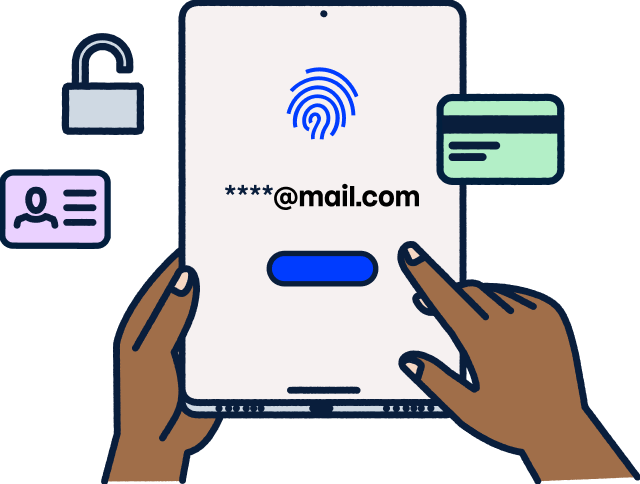- Products
- Renew
- Articles
- Support
- Free tools
- F‑Secure Text Message CheckerCheck with AI if a text message is a scam
- F‑Secure Online Shopping CheckerCheck for free if a website is safe to buy from
- F‑Secure Identity Theft CheckerCheck if your personal information has been part of a data breach
- F‑Secure Strong Password GeneratorCreate strong passwords for free
- F‑Secure IP CheckerCheck your IP address and location
- F‑Secure Online ScannerScan and clean your PC for free
- F‑Secure Router CheckerIs your internet connection safe?
- View all free tools
- Scam protection
- My F‑Secure
F‑Secure Text Message Checker

Check if a text message is a scam with our free AI-powered tool
Copy and paste or type the message, but be careful not to open the link.
This tool is in beta phase. Read more.
Add sender info
Enter the sender’s number or name and the suspected fake text message you got.
Check if it’s a scam
Artificial intelligence (AI) checks if it’s a safe or a harmful scam text message.
Rate the result
Tell the AI if you are happy with the result or not.
Privacy policy
What do we collect and why?
Text message scam protection reviews messages that are received from an unknown sender (i.e. the sender’s number is not saved in your contacts) or submitted to the online tool. This feature collects the following information from text messages:
- The text message content (for example any links to harmful websites)
- Text message sender
- Region where the request originates and the language of the message.
Retention of data related to the text message scam protection feature
The scam protection feature retains personal data only for the purpose of the making the verdict of whether the message is scam. The personal data linked to the text message is anonymized within a month of the verdict.
The text message scam protection feature uses artificial intelligence (AI). We use AWS Translate to translate text messages that are not in English following a no-trace policy, which means that AWS will not retain any of your personal data. All other AI is fully in our control and its sole purpose is to recognize scam text messages. We retain only non-personal information, for example the verdict (whether the text was scam or not) and the justification, to train the AI.


Complete protection for all devices
Get full protection against online threats for all devices with F‑Secure Total.
Stay safe against scam sites
Block viruses and protect all your devices
Browse securely with Privacy VPN
Prevent identity theft with 24/7 monitoring and alerts
Smishing Protection is coming for iOS and Android during 2024.

Remember to report scam text messages
Report SMS scams to help stop them from spreading and harming others. Find out how to report spam text messages from the FAQ.

Spam text messages can cause big problems
Fake text message scams can lead to monetary losses, loss of personal data, malware infection — even identity theft. SMS spam messages continue to get more popular among criminals, and anyone can receive them.

AI helps us keep you safe
This AI bot is friendly, and only bites scammers. The AI that powers this tool enables us to detect scams with superb efficiency.
Frequently asked questions
The tool is ready to be used, but we are improving the technology behind it, thanks to your valuable input. We are also working hard to support more languages. You can teach the AI by either liking or disliking the results it provides.
Scam messages often claim to come from the authorities or popular brands. This is done to gain your trust.
The messages tend to surprise or shock you. Typical methods are telling you your payment was denied, your tax information is flawed, or that there is a delivery for you.
The message may also try to impersonate your friend or family member. In such cases, contact the person in question through their original phone number, or social media. Do not send them money before checking it really is your friend or family member.
Phishing messages include a link. Following the link leads to an authentic-looking website. If it asks for your personal details, or tries to get you to download an app, don’t do it.
If you open the link, check its URL (web address) for any flaws, typos, or other red flags.
The messages may appear in existing message chains on your phone. Don’t trust the sender blindly.
Check the message for any typos or weird characters. These are used to fool message filters. Genuine messages don’t include such.
If a message seems real but you are unsure, do not open the link directly. Rather, sign into the service, or contact the party who the sender claims to be through their official contact information listed on their website. Do not contact the sender phone number directly.
On Android, you can report spam text messages from the Messages app, by touching and holding the conversation you want to report. Tap Block, then Report spam and then OK.
On iPhone, the Report Junk button appears under messages from unsaved numbers. Tap it, then tap Delete and Report Junk.
In UK and the US, you can report spam text messages by forwarding them to number 7726.
If the spam comes in the name of an authority or a company, contact them with the message.
You should also report the scam to the relevant authorities in your country.
Criminals behind scam text messages are almost without exception after money.
For that they need your personal details, which they use for identity theft, such as buying goods or applying to loans and credit cards in your name. They usually get these details through a link included in the fake text message, which then directs you to a fake website.
Criminals can also trick you into downloading malware that steals your information, or your money by accessing your bank.
If they succeed, they run away with the money, while you are left to deal with the consequences and possible losses.
Scam SMS messages almost always include a link that directs you to a bad website. There you are asked to enter your personal details, credit card details, send money, or download an application.
Criminals use these details you enter for identity theft fraud, in which they impersonate you to buy goods, apply for credit cards or loans, or they might start a company for money laundering in your name.
If you download an application through a fake text message link, it usually steals information or money directly from your bank.
Criminals send text message spam to a huge amount of people at the same time. And they profit even if just one person falls for the scam.
To achieve their goals, criminals first need to gain your trust and make the text message scams convincing. That’s why they often claim to come from authorities (such as the police, or tax administration) or popular brands, such as Netflix, Amazon and Facebook.
Yes, this free text message scam checker is safe to use. It’s brought to you by F‑Secure, a Finnish cyber security company with 35 years of experience. F‑Secure is listed on NASDAQ OMX Helsinki and has around 30 million active subscribers. F‑Secure products have won multiple awards globally from independent testing organizations. Along with our other free tools, this text message scam checker is safe to use as many times as you want to.
Smishing comes from SMS phishing. Essentially it means scam text messages that criminals use to direct you to phishing pages. Learn more about smishing from our article: What is smishing?
AI (artificial intelligence) is extremely efficient in finding patterns and anomalies from massive amounts of data. That makes AI an essential tool in detecting different kinds of attacks and scams, as that’s what they are: anomalies that follow certain patterns.
It’s good to keep in mind that online criminals will not have any issues utilizing AI in scams and other attacks. This powerful technology should also be used in protection. That’s why F‑Secure has been utilizing AI in combating cybercrime and protecting our customers already for a long time. AI significantly increases our capability to keep people safe. And with this particular tool, it helps us detect scams faster and keep you safe.
You can check all kinds of suspected fake text messages, including SMS, iMessage, WhatsApp, Facebook Messenger, Telegram, and so on.


















